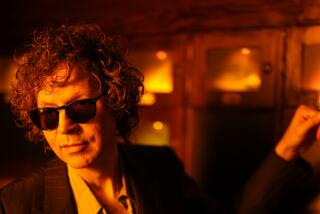Review: A festival’s final concert brings the microtonal outsiders in
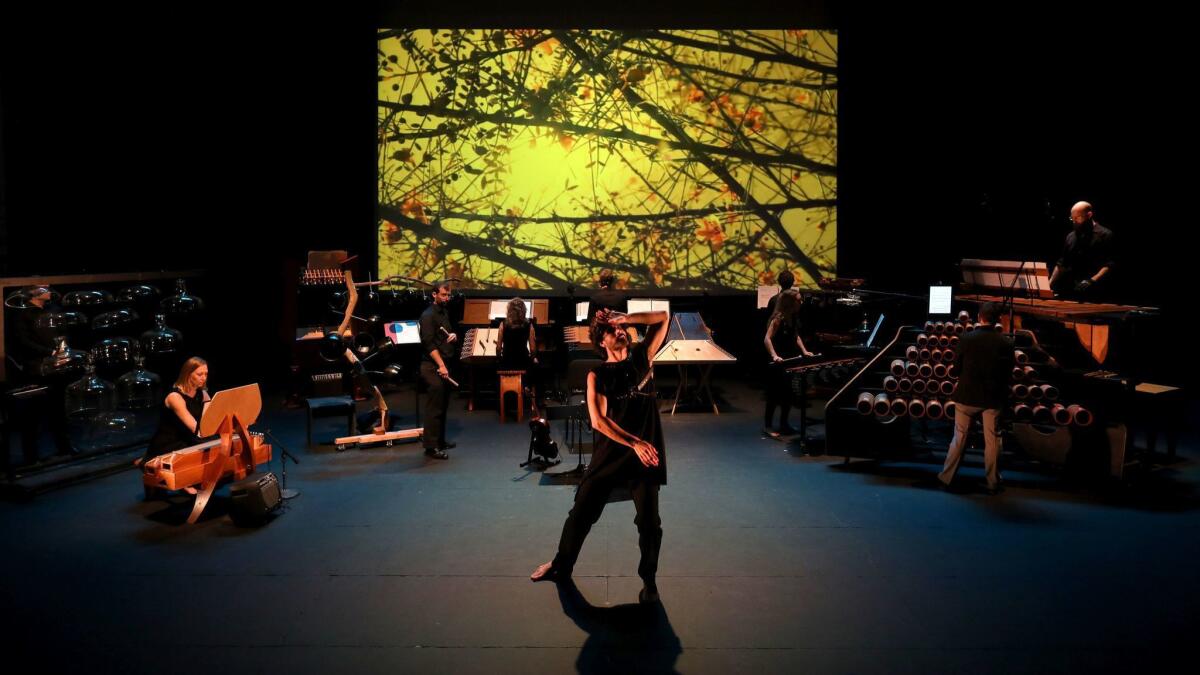
Among the dozen members inducted last month into the prestigious American Academy of Arts and Letters were historian Ron Chernow, playwright Terrence McNally, novelist George Saunders and artist Jenny Holzer. And then there was Ben Johnston, who, at 92, is American’s dean of microtonal music and consequently an outsider artist with nothing like the name recognition of the others.
How is it possible that this elder statesman — whose cycle of 10 string quartets is one of the wonders of American chamber music — remains an outlier?
Johnston’s Octet, which was written in 2000 and appears to be his last completed composition (his health has been poor in recent years), didn’t receive a first performance until a 2012 new music festival in Donaueschingen, Germany. It took an additional six years for the Octet to get its American premiere Friday night at REDCAT during the final concert of MicroFest 2018, the annual Southern California festival of microtonal music.
Blame, if you will, the obscurity of microtonally tuned music for such neglect. But not so fast.
REDCAT was mostly full Friday (and reportedly again Saturday). MicroFest has made it a practice to end each June with a Harry Partch event in REDCAT. There is always an audience for the legendary American maverick who invented fabulous instruments that divide the octave into 40 parts and who found common ground between Greek mythology and the mythology of the road and rails that Partch rode as a hobo during the Great Depression.
Johnston’s music, graciously experimental in his early years and simply gracious in later ones, may be a little like that of the cantankerous Partch, who was represented by theatrical realizations of his dance piece “Daphne of the Dunes” and his hitchhiker-themed work “Barstow.” Johnson, nevertheless, was Partch’s most important pupil and collaborator. And, I can think of no more gentle or effective introduction, especially for an American, to the world of Partch and his microtones than Johnston’s sublime 17-minute Octet.
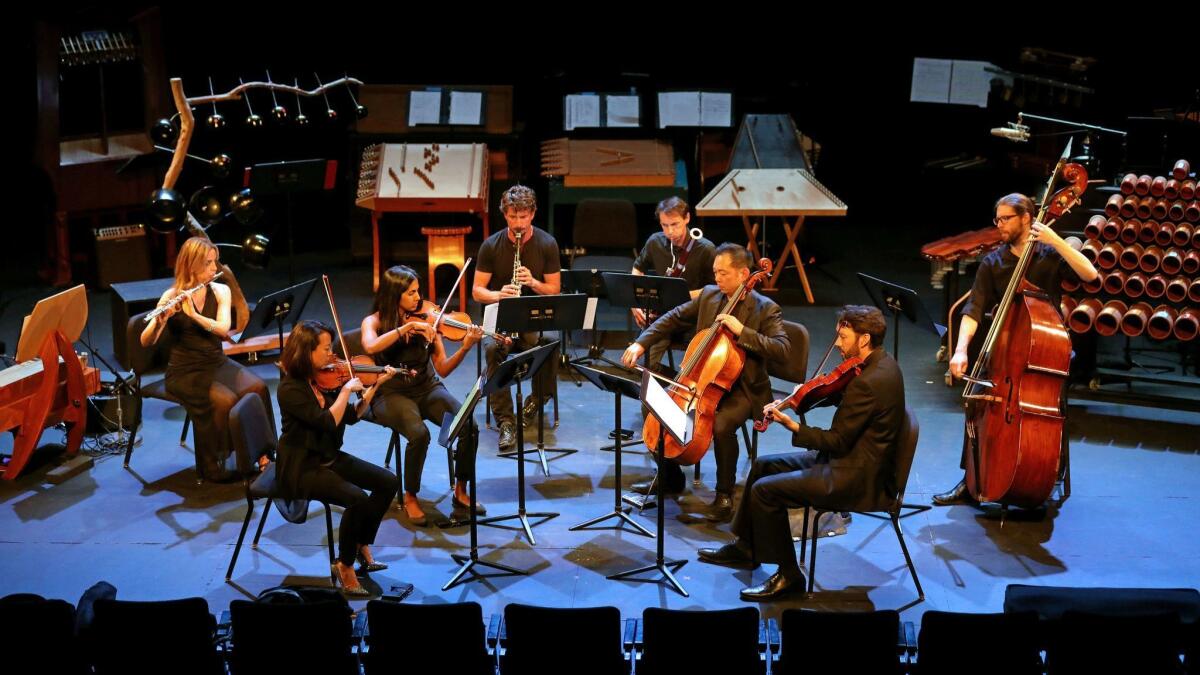
The score is a series of variations on a familiar tune that was used on the soundtrack of the Ken Burns television miniseries “The Civil War.” Each variation has a different instrumentation and sonic character — the ensemble is flute, clarinet, bassoon, string quartet and double bass. But rather than being plunged into a micro-tuned world where everything sounds out of whack to the unsuspecting listener, we are introduced to the microtones gradually. The tunings take on the character of detours into intriguing territories, familiar but fantastical.
By the end of the Octet, Jay Ungar’s “Ashokan Farewell” has been fully transformed. Microtonal harmonies open doors of the tune and the timbres. The melody is no longer a farewell but a welcome mat to the ears to come inside. I am unable to describe just how moving this sense of belonging made by music can be, but I sensed an aura sublimity all around me.
The transcendent Johnston performances were anchored by the L.A.-based Lyris Quartet, which opened the program with Johnston’s penultimate string quartet from 1988. The Lyris played it last fall for the Santa Monica new music series Jacaranda, but this time the ethereal slow third movement hinted at the serene micro-toned beauty of the Octet. The additional microtonally supple players for the Octet were flutist Sara Andon, clarinetist James Sullivan, Bassoonist Jon Stehney and bassist Scott Worthington. The good news is that these players go into the studio this week to record both pieces.
As for the Partch, it was played by Partch, guitarist John Schneider’s ensemble dedicated to re-creating the art-object Partch instruments — the cloud chamber bowls, the exotic massive marimbas and the like. A new one is built each year. The latest novelty is called a Gourd Tree.
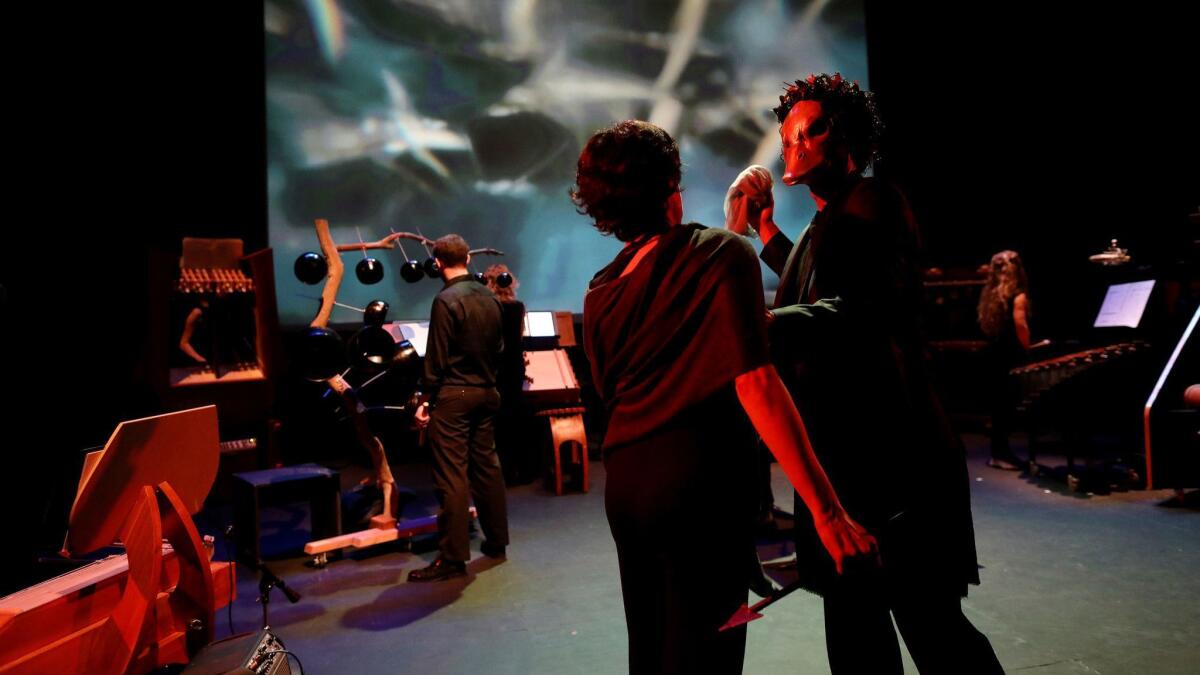
The Gourd Tree with bells was, of course, perfect for “Daphne of the Dunes,” given that the nymph of the myth is turned into a laurel to foil the erotic pursuit by the god Apollo. For the performance, casebolt and smith (the dance duo of Liz Casebolt and Joel Smith) recounted the myth first in entertaining patter, while a video behind the stage projected classic paintings of the characters. The dancers began portraying campy Greek myth, but once a video montage of clips from “North by Northwest” and “Psycho” were projected on a screen, the dance turned into a surprisingly effective Hitchcockian Daphne and Apollo chase scene among the Partch instruments.
Even so, It was not always easy to know where to look, Partch’s instruments alone being an eyeful. Musically, Partch’s more disjointed scores, alternating between bouncy rhythms and the moody languorous passages on an altered violin or altered organ, sounding like nothing else in the sonic universe.
For “Barstow,” Partch’s riotous music set to hobo graffiti (offering advice on where to get a handout or a bride), Schneider replaced Partch’s own gruff reciting/growling/singing (sort of) style with something more mellifluous and whimsically theatrical. Still microtonally dissonant and consonant, this is just how you would expect a wily drifter into the American Academy of Outsider Arts and Scrawled Graffiti to sound.
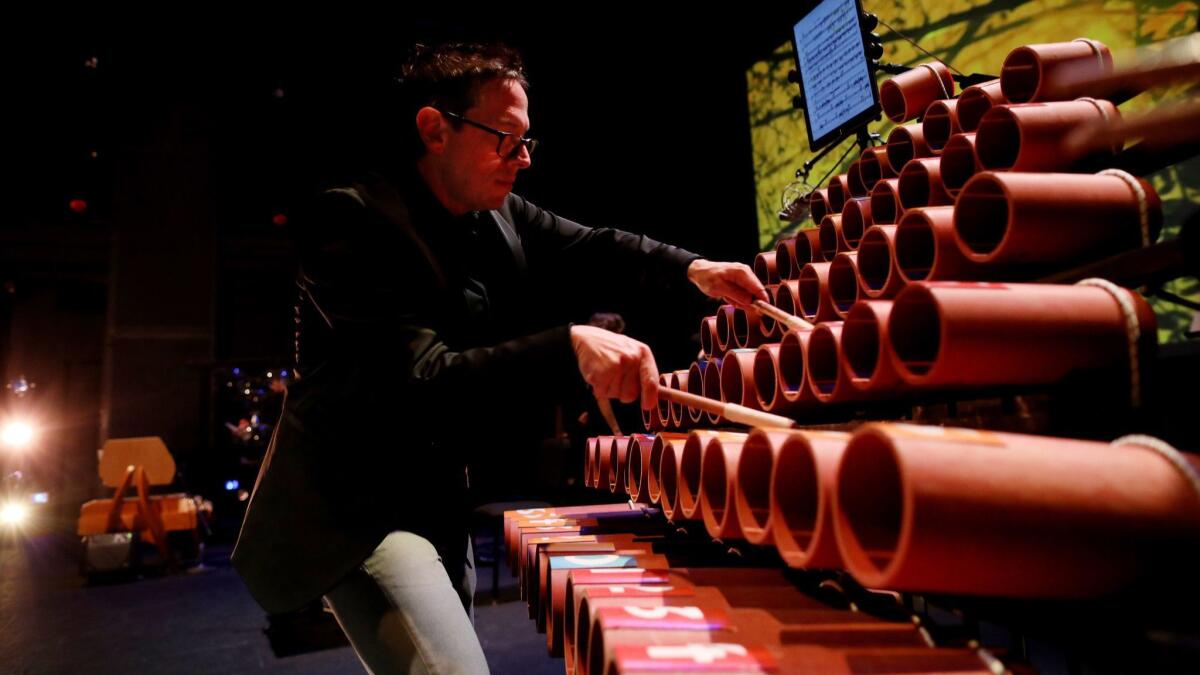
More to Read
The biggest entertainment stories
Get our big stories about Hollywood, film, television, music, arts, culture and more right in your inbox as soon as they publish.
You may occasionally receive promotional content from the Los Angeles Times.


